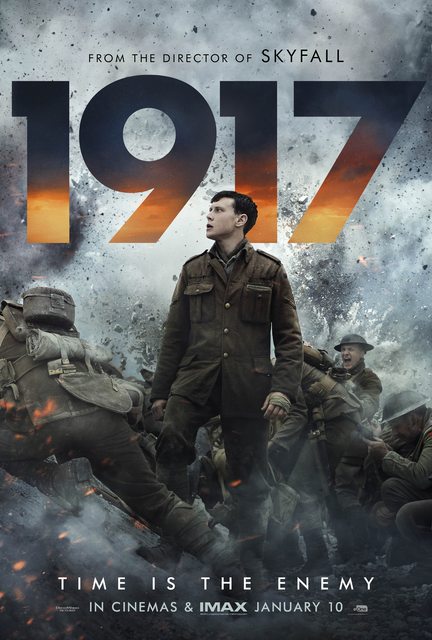1917: A Lesson in the One-Take
I will preface this by saying that I am an ardent fan of Dunkirk. I think it’s a great movie. Every award it got it deserved. If you disagree, please email me directly and I will quickly forward a five-page essay-rant I wrote in the 8th grade. I say this because I will defend Dunkirk to the same grave I will with 1917.
1917, by Sam Mendes of Skyfall fame, is an impossible movie. We follow two young soldiers, Blake (Dean-Charles Chapman) and Schofield (George MacKay) as they weave through trenches, fields, and rotting bodies. Their mission is to deliver a message that calls off a doomed attack, saving 1600 men from certain, painful death. Blake’s brother is one of these men. The result: two hours of unending, constant, heart-attack-inducing anxiety, packed into a choreographic masterpiece beyond the longest of long-takes’ dreams. Alfred Hitchcock can rest in peace, knowing someone has found a successor to Rope.
The movie is formatted around the mythical one-take, meaning that (by appearance), from when the camera starts rolling at the beginning of the movie, it never stops until the very end. It is an impressive and daunting cinematic technique, especially considering Hollywood’s fondness for the one-to-two second takes in most modern films. The one take is a tall order, perhaps, but one that immediately takes us away into the world Mendes creates.
From the opening shot, we are enclosed in the world of these two characters: the peaceful hope of being home by Christmas; the bantering over the lack of good food; the hectic, messy traffic of the settled trenches. The camera weaves through people and trenches, The closer Blake and Schofield get to the front lines, the muddier and messier it gets. We see collapsed walls and injured people, and a hungover higher-up who half-heartedly gives them orders and “blesses” them with alcohol.
An interesting cinematic trick about the one-take is the way it trails a character. Ironically enough, you can turn to John Wick 2 for an example. In the now-iconic catacomb shoot-out, we follow Wick through the weaving tunnels, just over his shoulder. This is resemblant of how we follow Blake and Schofield as they weave through landscapes and escape enemy soldiers. They feel like video game characters.
I could go on and on about every scene in this movie. Even the tiny shots, like trucks being stuck in the mud or Schofield attempting to cross a demolished bridge, are filled with desperation and anxiety. We never know what to expect. Around every corner there could be the barrel of a rifle pointed in their faces, or a corpse, or a dead end. The entire film is nervousness on a trip-wire. (Ironic considering there are literal tripwires in some of the bunkers.) The horrors of No Man’s Land are so well displayed that it legitimately feels like we are in the war with the two main characters. Blood-slicked mud along craters. Bodies strewn around, half-buried or tangled in barbed wire. A single, rusted Mark 2 tank with a massive hole in its side. Even later, as Blake and Schofield reach the relative cleanliness of the abandoned German trench, we are at unease. Every corner could be hiding a German soldier, a booby trap, even massive trench rats.
We trust that the characters know where they are going because we don’t, and when they stray from their path, we are worried they will never find their way back. This constant fear makes the few moments of true peace even more rewarding, like when we get to see the two walking upright after what feels like hours of crawling and stumbling.
There isn’t much more to say about the climax, other than this: chaos. Unfiltered chaos, as explosions go off, people scream and yell and die, debris flies everywhere. Schofield, MacKay literally running to catch up with the camera, runs a quarter-mile under direct artillery fire, bumping into other soldiers running in an entirely different direction.
I love this movie because it lets you sympathize with the characters and doesn’t spoon-feed you drama or exposition. Through Blake and Schofield’s actions, we see their heroics; through their appearance, we see their youth; their conversations, their personalities. There are people that criticize this movie for not providing enough context and character development, and perhaps that is warranted, but the point of the movie isn’t to know about the characters; it’s to be the characters. And through the one-take method, the film does that perfectly.
1917 is not even close to a perfect movie, but it is easily one of the greatest movies of the year. Perhaps one of the greatest war movies of all time as well. I look forward to the next time someone comes up with something as revolutionary to the one-take medium as 1917 was.
You can take the woman out of the bird, but you can't take the bird out of the woman: meet Yoon Lee.

